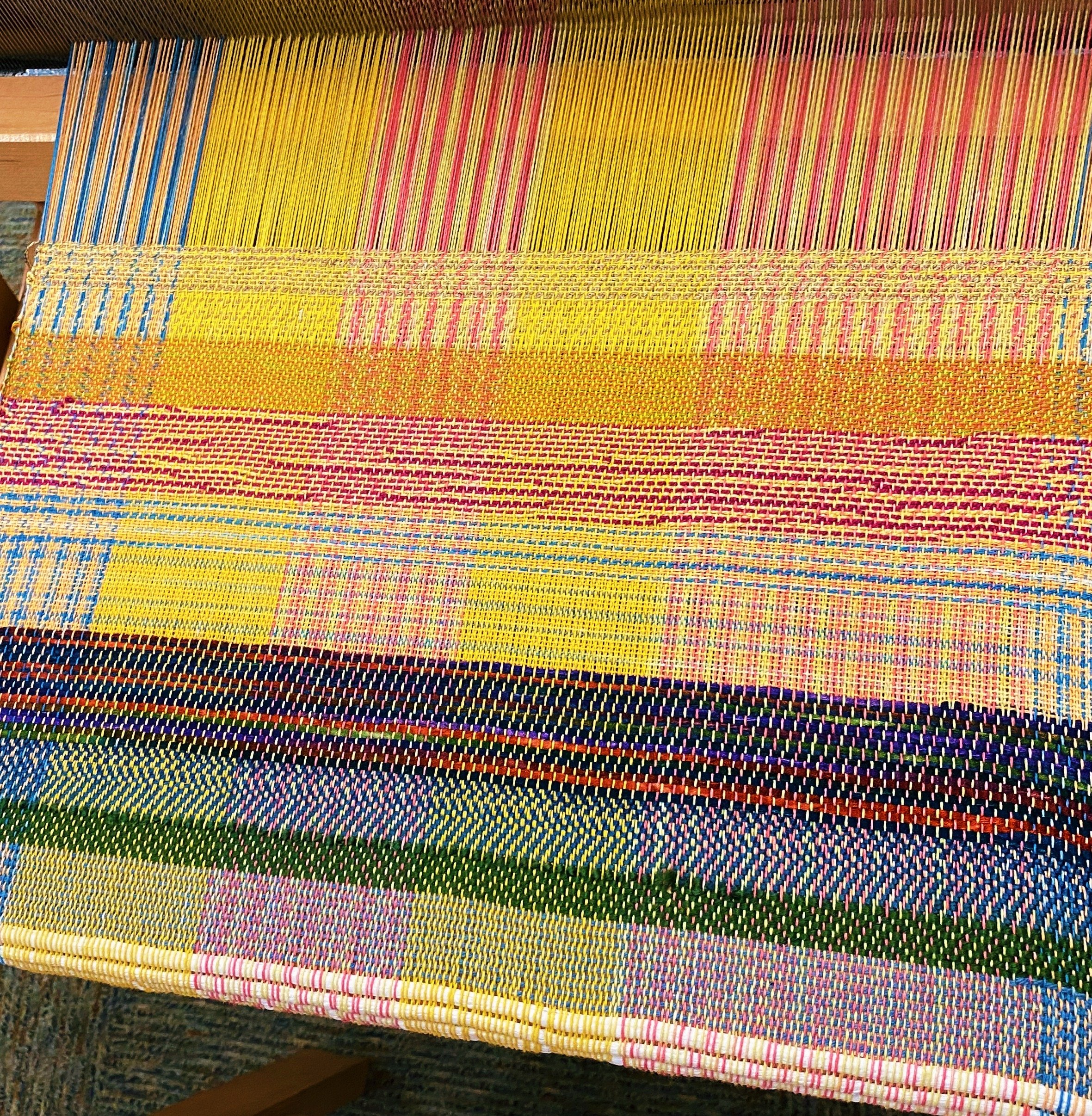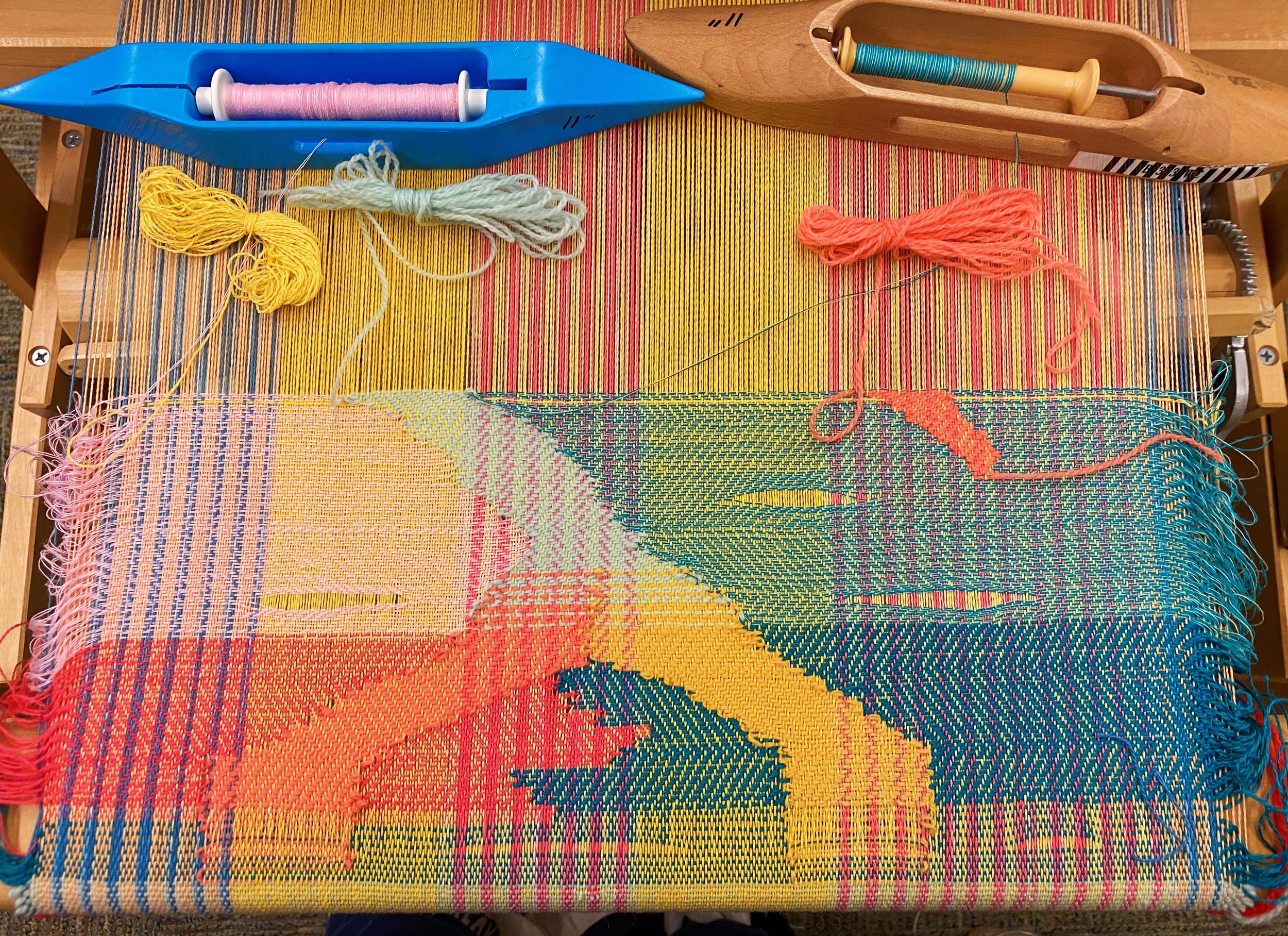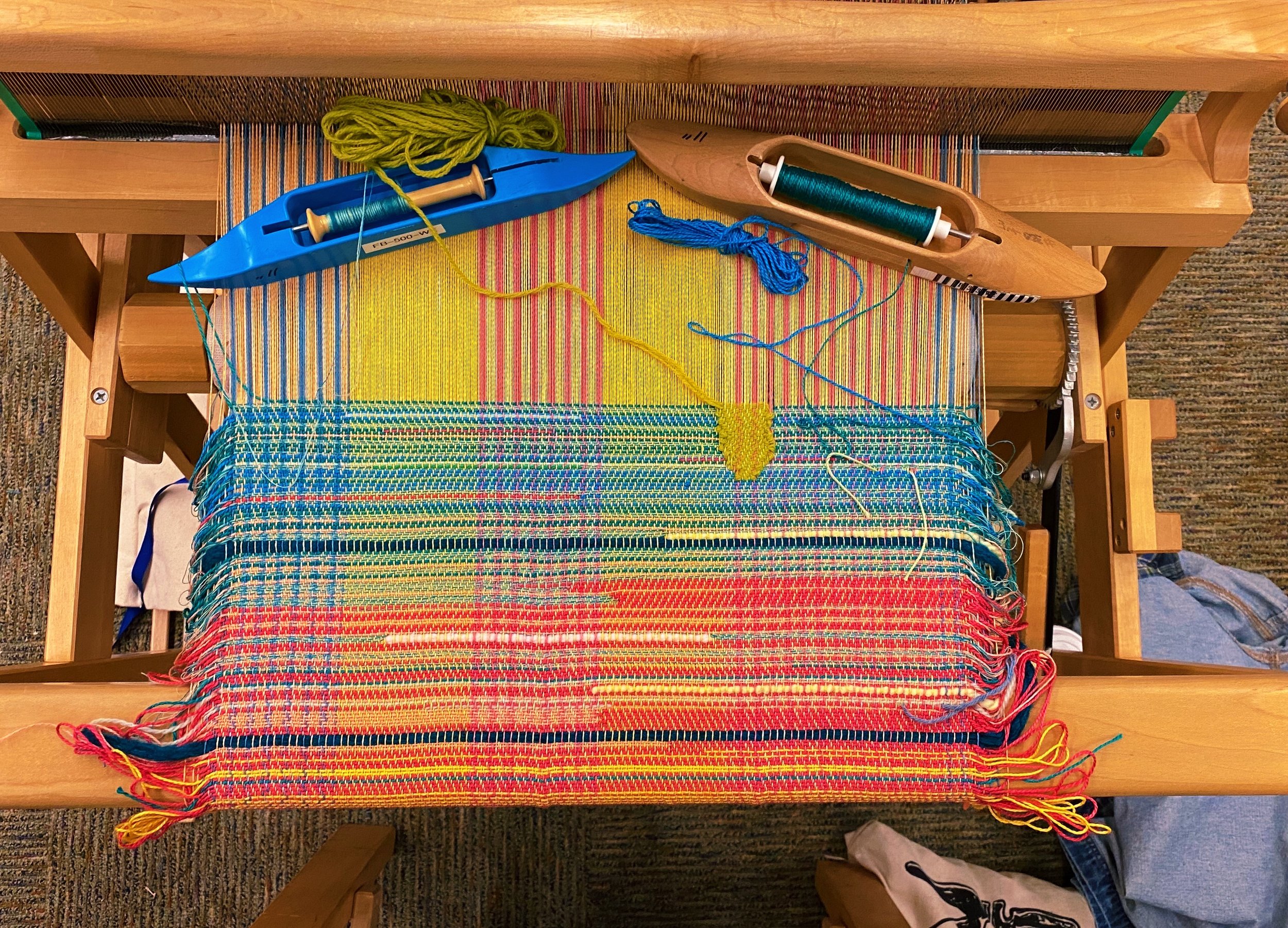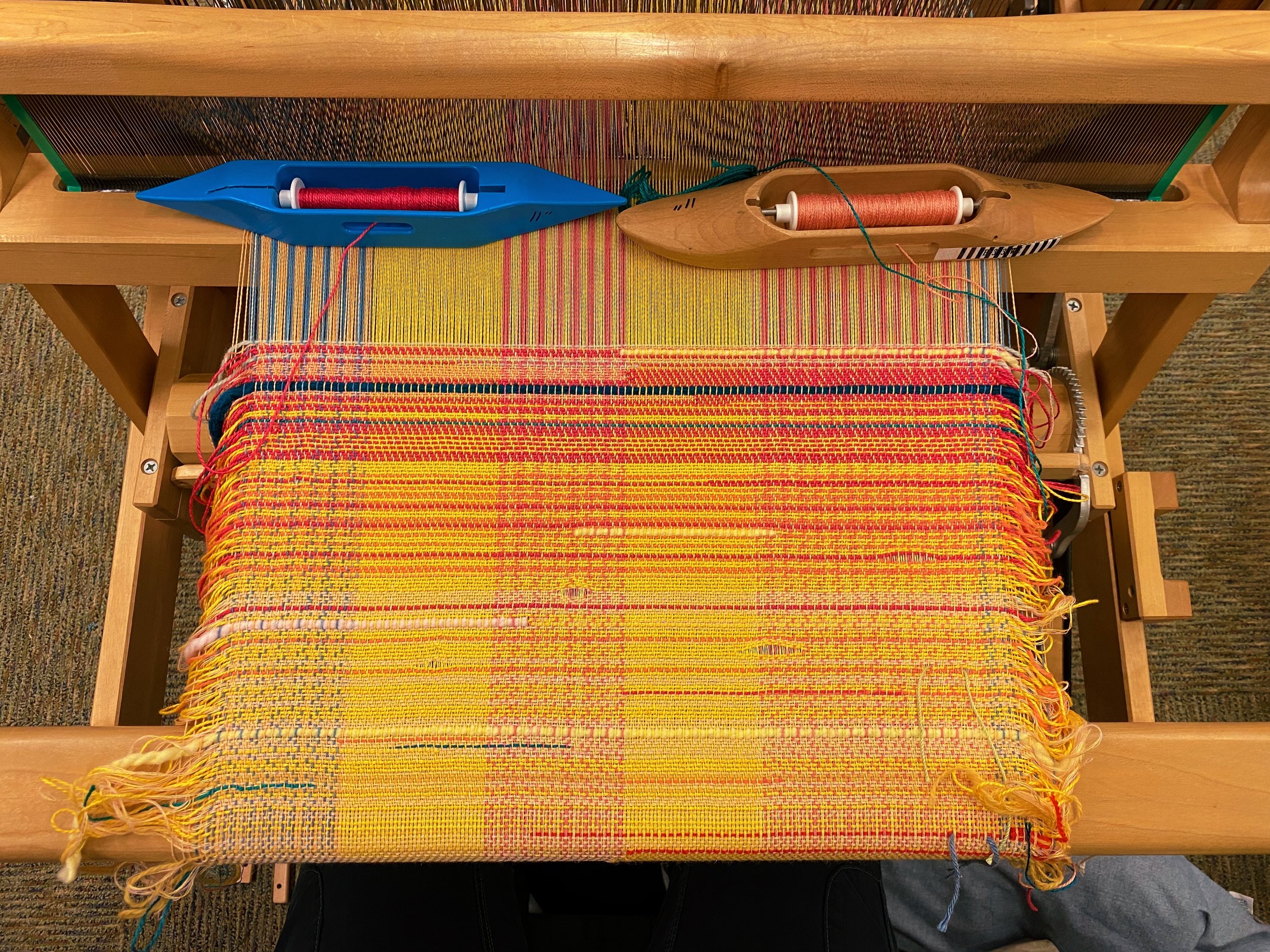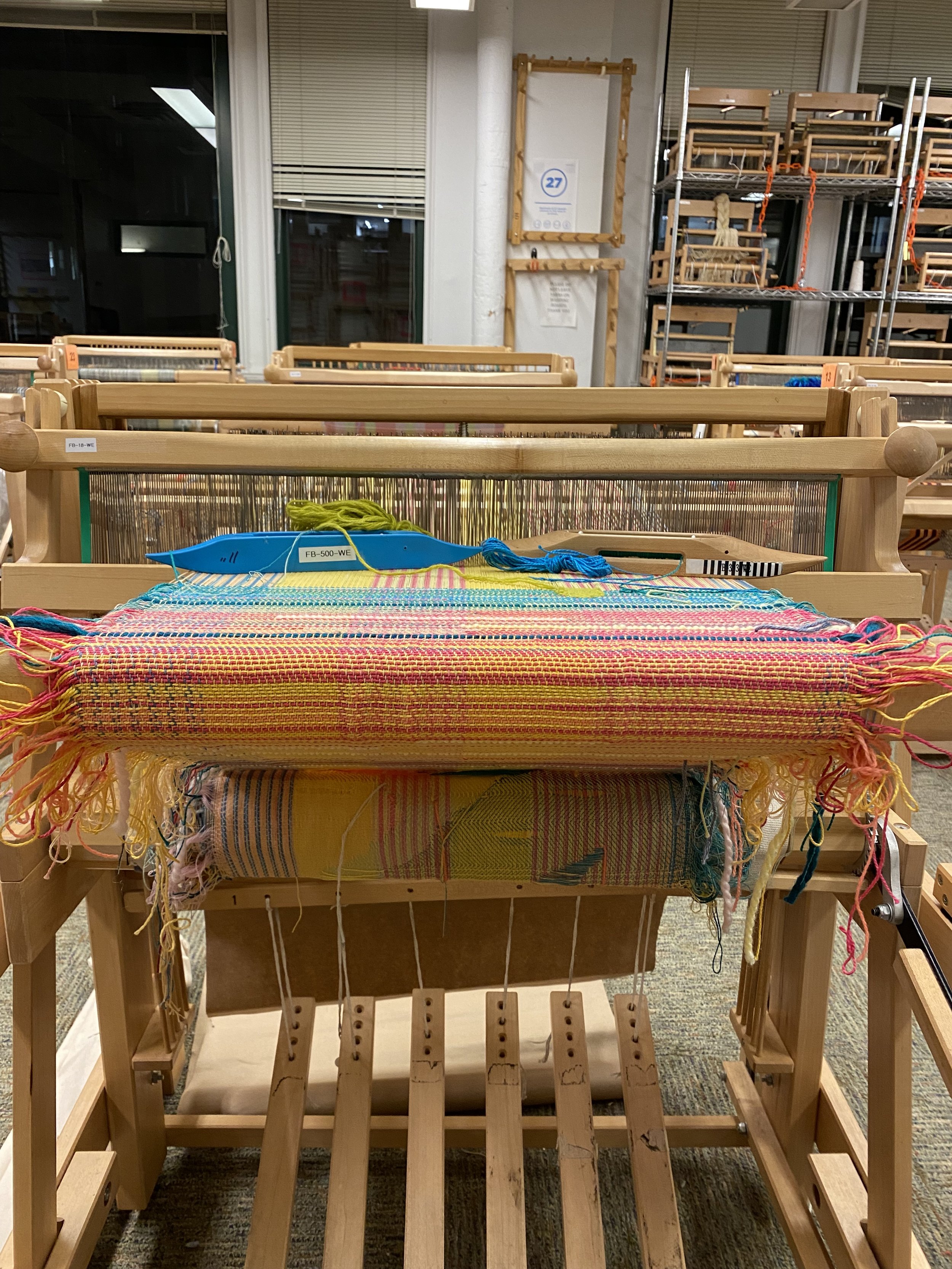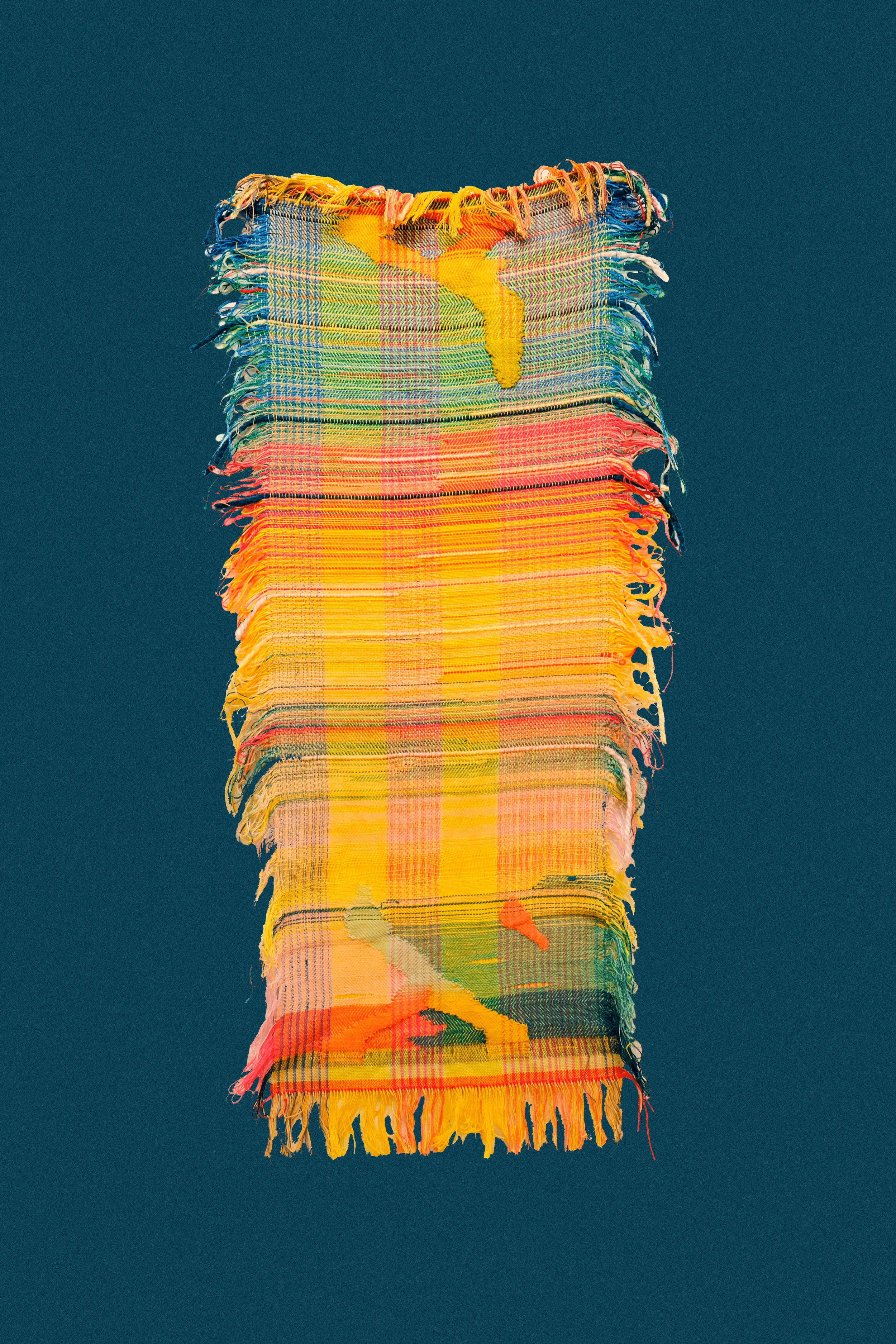Transcendence
(includes process)
Oct 2021, 20” x 46”, hand-dyed cotton yarn, misc yarn
This weaving is the first floor-loom weaving I have made. This piece explores color and technique with a simple 4-harness floor loom set-up. Other techniques include tapestry weaving, uneven beating, lengthwise fringe, and supplementary weft.
The floor-loom process was definitely hard to get used to. Planning a weaving seemed challenging to me. I’m not sure if this is because the rest of the art I do is so different or easier to plan in some way, but designing and carrying out a naturally abstract piece was not easy. In the end, I was able to create a small compositional weaving during which I could practice basic techniques.
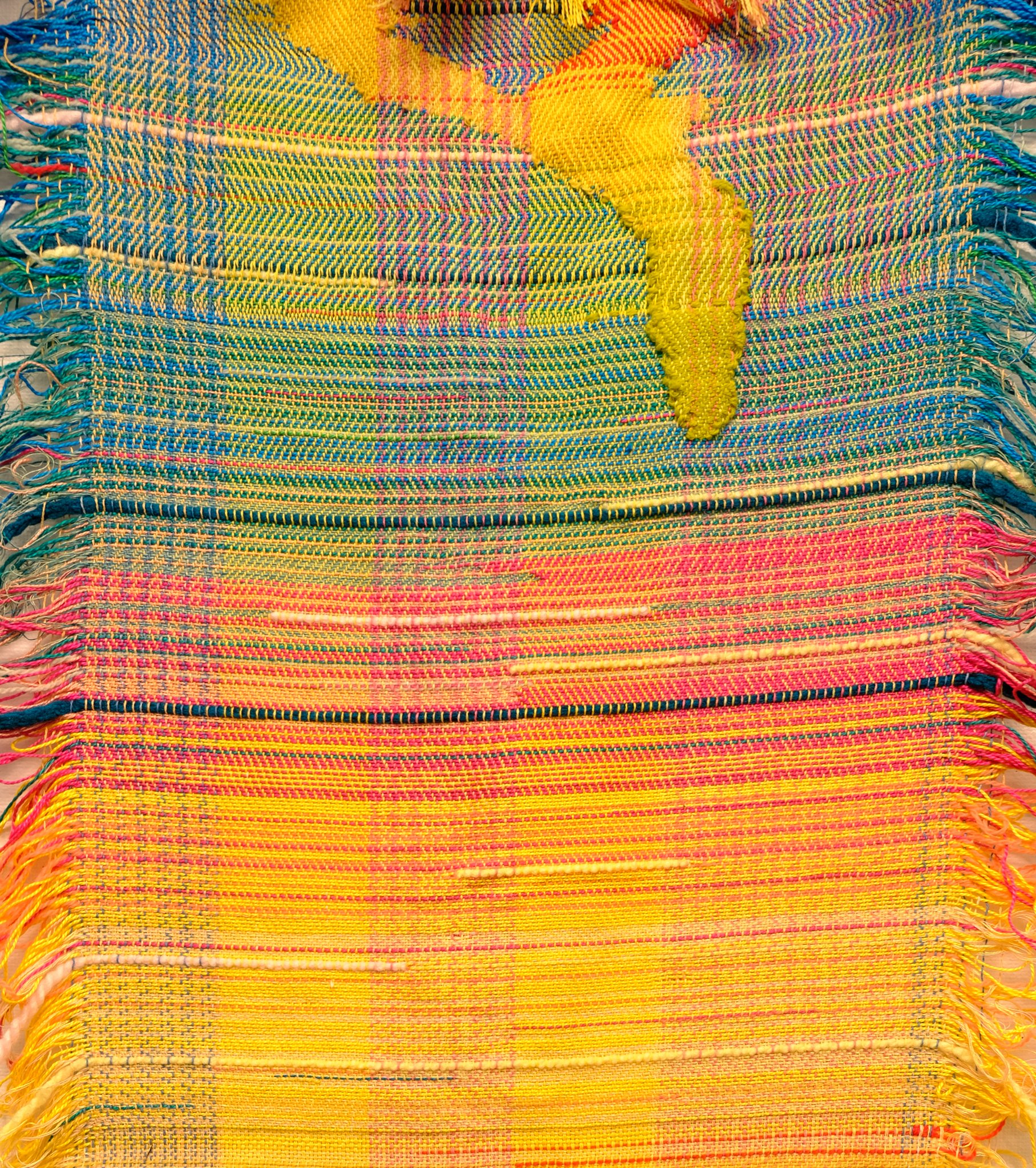

Step 1: Dye and Wind the Yarn
We used 8/2 cotton yarn and dyed 2,000 yards of material. This would be enough for a 3-yard warp with an 18” width as well as some weft.
We used MX dyes to immersion dye the yarn. Then I wound the skeins into balls using an umbrella swift.

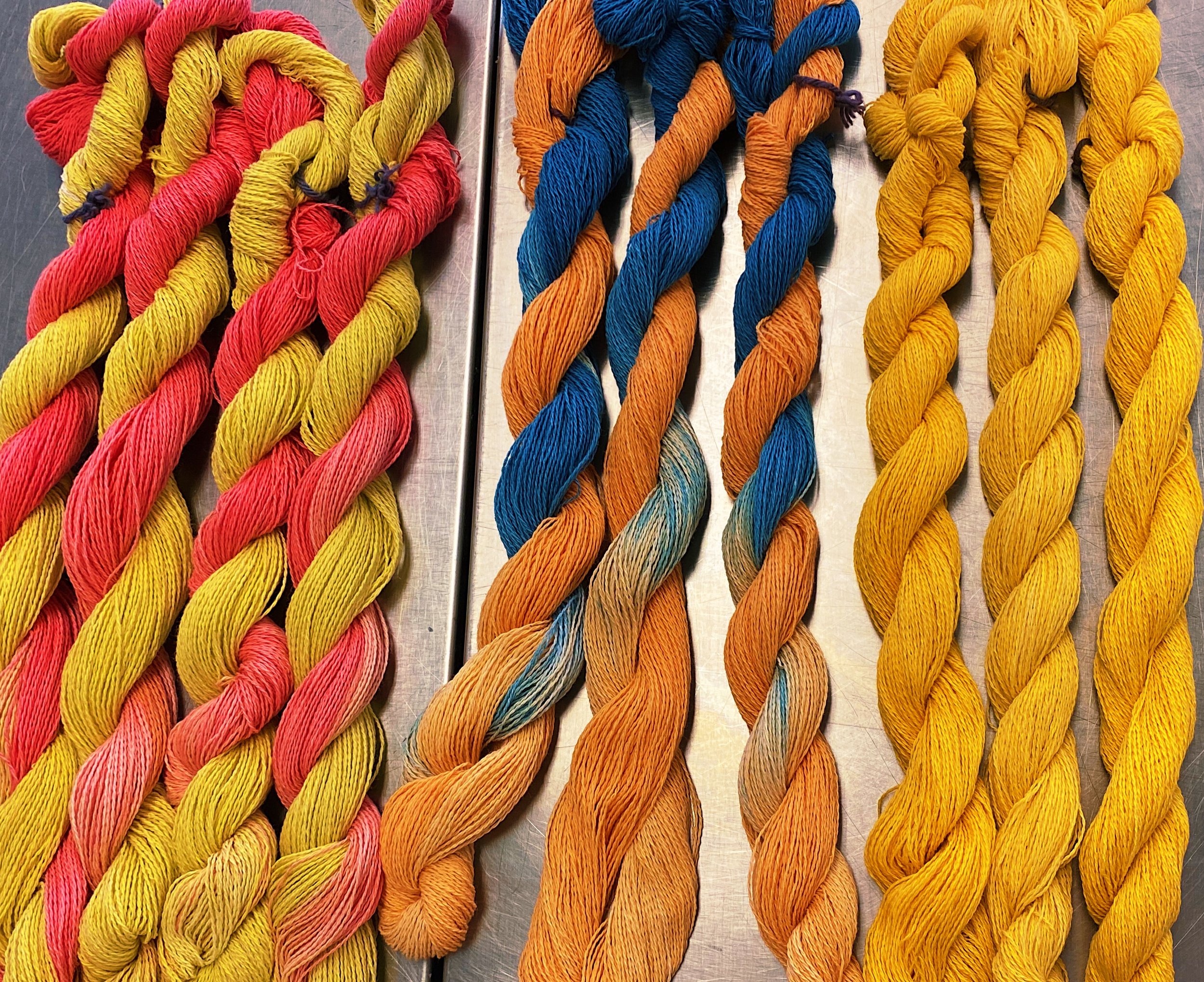
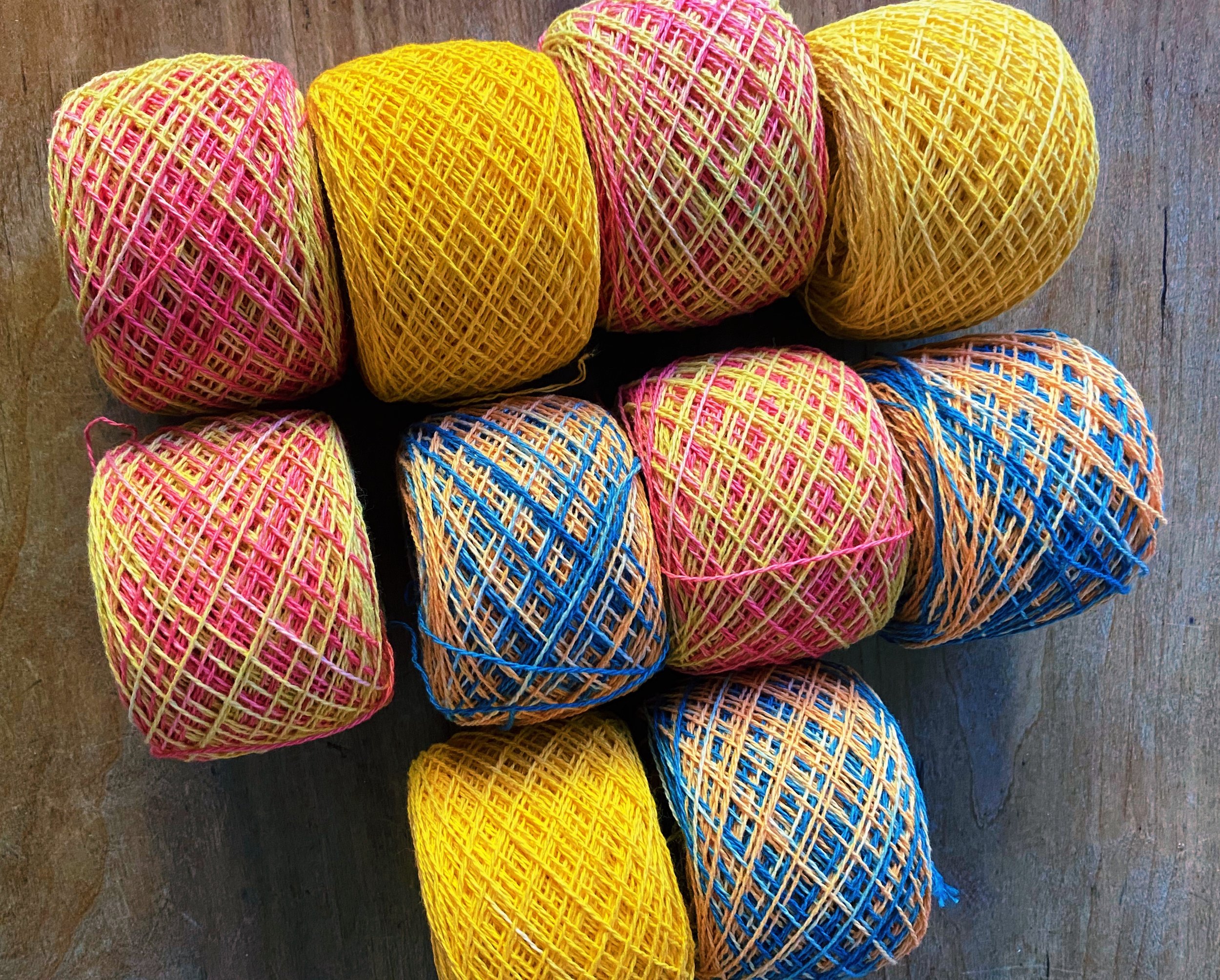
Step 2: Winding, Beaming, and Threading the Warp
We used a warping board to measure and format the yarn for the loom. The warp is then transferred to the loom and the lease sticks are inserted to secure the cross. Then the yarn is threaded through the heddles in a simple 1, 2, 3, 4 pattern. The ends are also threaded through the reed which is used to beat down after each pass. At 24 EPI (ends per inch) and 18” wide, that makes 432 ends to thread (and this is considered a rather small weaving).
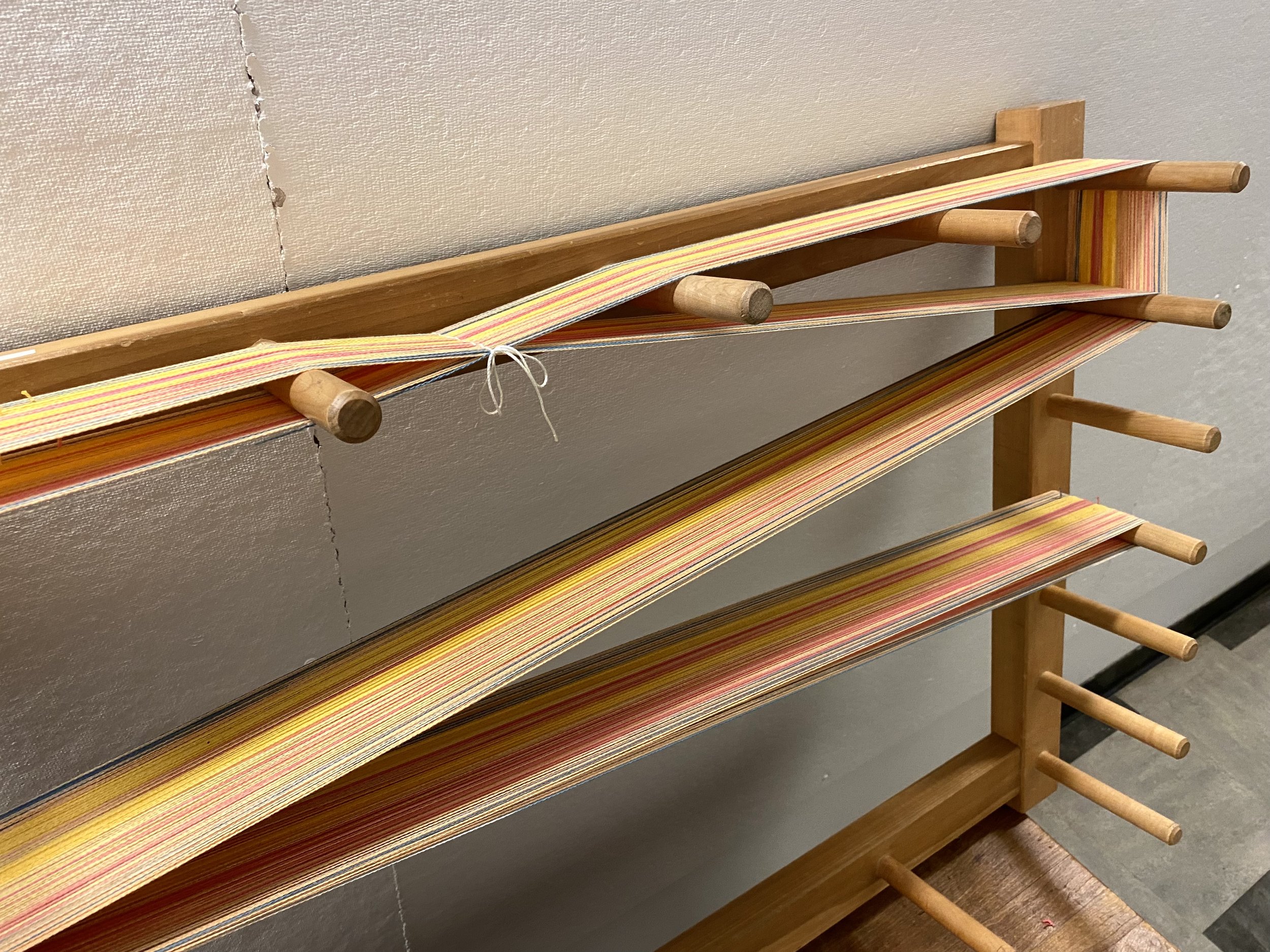
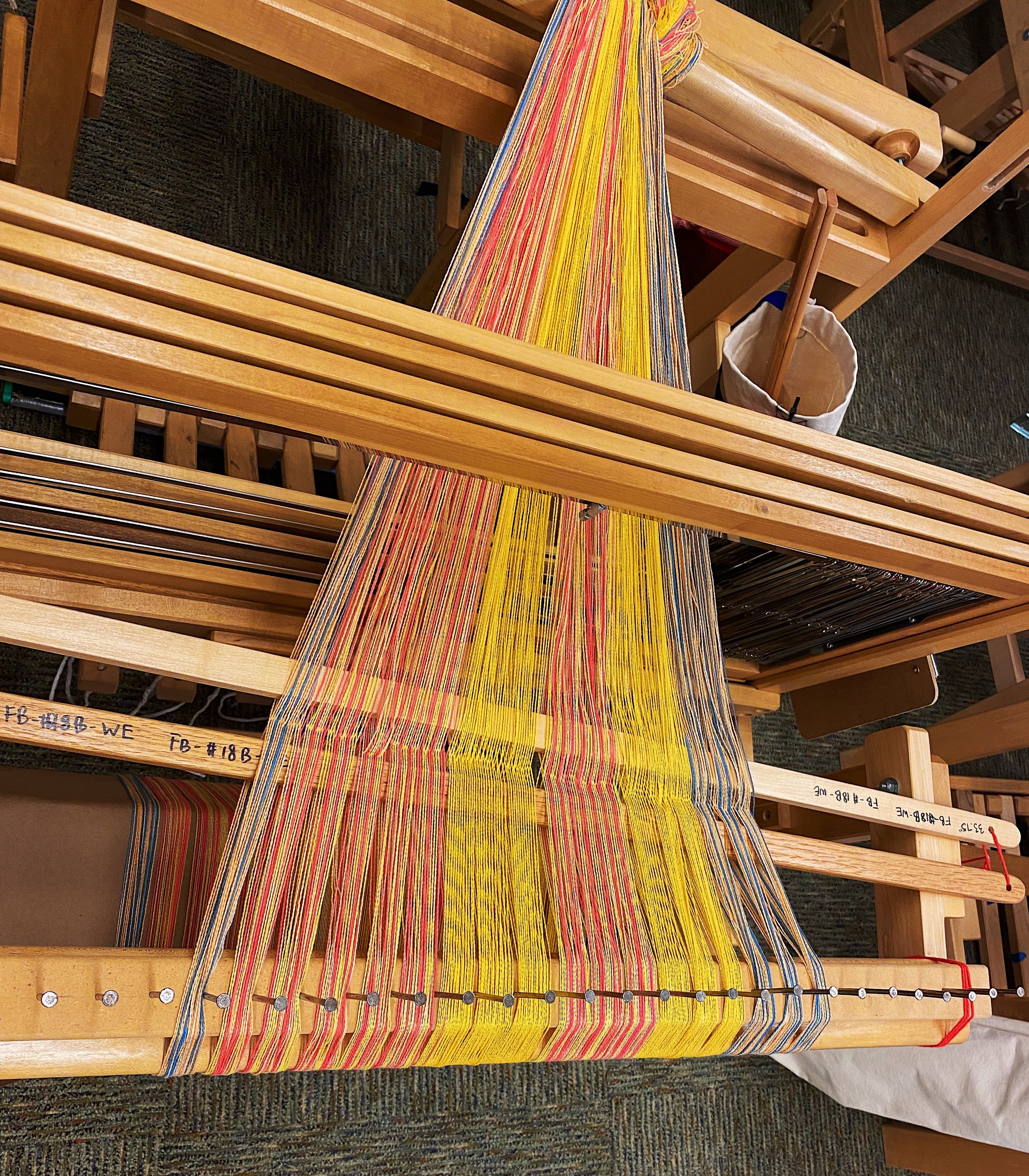

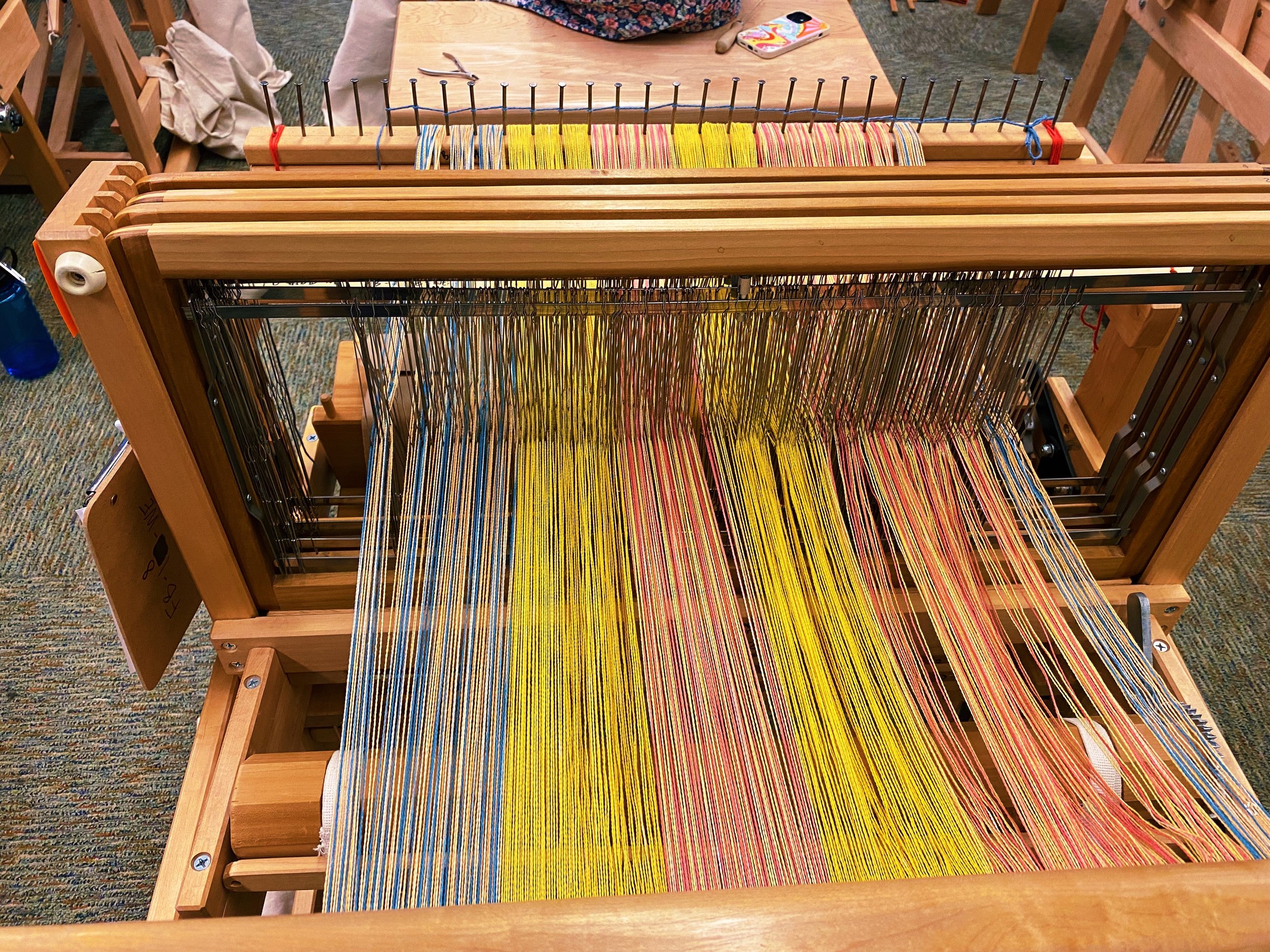
Step 3: Tensioning and Weaving
The weaving then begins; we start with toilet paper to even out the tension. The first portion of the warp I used to explore different techniques, knowing I would cut it off of the final piece.

